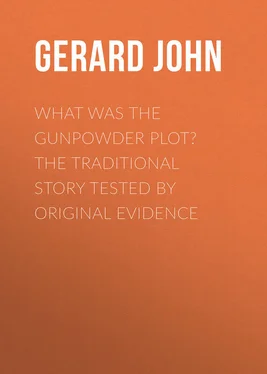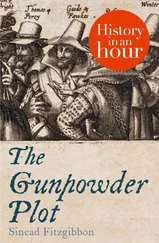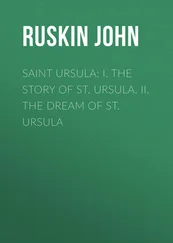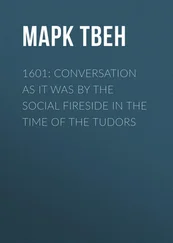John Gerard - What was the Gunpowder Plot? The Traditional Story Tested by Original Evidence
Здесь есть возможность читать онлайн «John Gerard - What was the Gunpowder Plot? The Traditional Story Tested by Original Evidence» — ознакомительный отрывок электронной книги совершенно бесплатно, а после прочтения отрывка купить полную версию. В некоторых случаях можно слушать аудио, скачать через торрент в формате fb2 и присутствует краткое содержание. Жанр: foreign_antique, foreign_prose, на английском языке. Описание произведения, (предисловие) а так же отзывы посетителей доступны на портале библиотеки ЛибКат.
- Название:What was the Gunpowder Plot? The Traditional Story Tested by Original Evidence
- Автор:
- Жанр:
- Год:неизвестен
- ISBN:нет данных
- Рейтинг книги:5 / 5. Голосов: 1
-
Избранное:Добавить в избранное
- Отзывы:
-
Ваша оценка:
- 100
- 1
- 2
- 3
- 4
- 5
What was the Gunpowder Plot? The Traditional Story Tested by Original Evidence: краткое содержание, описание и аннотация
Предлагаем к чтению аннотацию, описание, краткое содержание или предисловие (зависит от того, что написал сам автор книги «What was the Gunpowder Plot? The Traditional Story Tested by Original Evidence»). Если вы не нашли необходимую информацию о книге — напишите в комментариях, мы постараемся отыскать её.
What was the Gunpowder Plot? The Traditional Story Tested by Original Evidence — читать онлайн ознакомительный отрывок
Ниже представлен текст книги, разбитый по страницам. Система сохранения места последней прочитанной страницы, позволяет с удобством читать онлайн бесплатно книгу «What was the Gunpowder Plot? The Traditional Story Tested by Original Evidence», без необходимости каждый раз заново искать на чём Вы остановились. Поставьте закладку, и сможете в любой момент перейти на страницу, на которой закончили чтение.
Интервал:
Закладка:
It would not be difficult to continue similar citations, but enough has now been said to show that it is nothing new to charge the chief minister of James I. with having fostered the conspiracy for his own purposes, or even to have actually set it a-going. It appears perfectly clear that from the first there were not a few, and those not Catholics only, who entertained such a belief, and that the facts of the case are inadequately represented by historians, who imply, like Mr. Jardine, that such a theory was first broached long afterwards, and adopted by Catholics alone. 128 128 A writer, signing himself "Architect," in an article describing the old palace of Westminster ( Gentleman's Magazine , July, 1800, p. 627), having occasion to mention the Gunpowder Plot, observes: "This Plot is now pretty well understood not to have been hatched by the Papists, but by an inveterate foe of the Catholicks of that day, the famous minister of James… All well-informed persons at present laugh at the whole of this business."
It is moreover apparent that if in recent times historians have forgotten that such a view was ever held, or consider it too preposterous for serious discussion, this is not because fuller knowledge of the details of the conspiracy have discredited it. The official version of the story has remained in possession of the field, and it has gradually been assumed that this must substantially be true. In consequence, as it seems, writers of history, approaching the subject with this conviction, have failed to remark many points suggested even by the documentary evidence at our disposal, and still more emphatically by the recorded facts, which cannot but throw grave doubt upon almost every particular of the traditional account, while making it impossible to believe that, as to what is most essential, the Plot was in reality what has for so long been supposed. That long before the "discovery" the Plot must have been, and in fact was, known to the government; that this knowledge was artfully dissimulated, in order to make political capital out of it; that for the same purpose the sensational circumstances of its discovery were deliberately arranged; and that there are grave reasons for suspecting the beginnings of the desperate enterprise, as well as its catastrophe, to have been dexterously manipulated for State purposes; – such are the conclusions, the evidence for which will now be considered.
CHAPTER IV.
THE TRADITIONAL STORY
The history of the Gunpowder Plot prior to its discovery, as related with much circumstantiality by the government of the day, has, in all essential particulars, been accepted without demur by the great majority of modern writers. We have already seen that those who lived nearer to the period in question were less easily convinced; it remains to show that the internal evidence of the story itself is incompatible with its truthfulness.
The point upon which everything turns is the secret, and therefore dangerous, character of the conspiracy, which, as we are told, completely eluded the vigilance of the authorities, and was on the very verge of success before even a breath of suspicion was aroused, being balked only by a lucky accident occurring at the eleventh hour, in a manner fitly described as miraculous.
On the other hand, however, many plain and obvious considerations combine to show that such an account cannot be true. It is not easy to believe that much which is said to have been done by the conspirators ever occurred at all. It is clear that, if such things did occur, they can by no possibility have escaped observation. There is evidence that the government knew of the Plot long before they suddenly "discovered" it. Finally, the story of the said "discovery," and the manner in which it took place, is plainly not only untrue, but devised to conceal the truth; while the elaborate care expended upon it sufficiently indicates how important it was held that the truth should be concealed.
There are, moreover, arguments, which appear to deserve consideration, suggesting the conclusion that the Plot was actually set on foot by the secret instigation of those who designed to make it serve their ends, as in fact it did. For our purpose, however, it is not necessary to insist greatly upon these. It will be enough to show that, whatever its origin, the conspiracy was, and must have been, known to those in power, who, playing with their infatuated dupes, allowed them to go on with their mad scheme, till the moment came to strike with full effect; thus impressing the nation with a profound sense of its marvellous deliverance, and winning its confidence for those to whose vigilance and sagacity alone that deliverance appeared due.
That we may rightly follow the details of the story told to us, we must in the first place understand the topography of the scene of operations, which, with the aid of the illustrations given, will not be difficult.

The old House of Lords 129 129 The name "old House of Lords" is somewhat ambiguous, being variously applicable to three different buildings: (i.) That here described, which continued to be used till the Irish Union, a. d. 1800. (ii.) The "Court of Requests," or "White Hall," used from 1800 till the fire of 1834. (iii.) The "Painted Chamber," which, having been repaired after the said fire, became the place of assembly for the Lords, as did the Court of Requests for the Commons. The original House of Lords was demolished in 1823 by Sir John Soane, who on its site erected his Royal Gallery. (See Brayley and Britton, History of the Palace of Westminster .)
was a chamber occupying the first floor of a building which stood about fifty yards from the left bank of the Thames, to which it was parallel, the stream at this point running almost due north. Beneath the Peers' Chamber, on the ground floor, was a large room, which plays an important part in our history. This had originally served as the palace kitchen, 130 130 The authority for this is the Earl of Northampton, who at Father Garnet's trial mentioned that it was so stated in ancient records. Remains of a buttery hatch in the south wall confirmed his assertion. The foundations of the building were believed to date from the time of Edward the Confessor, and the style of architecture of the superstructure assigned it to the early part of the thirteenth century, as likewise the "Prince's Chamber."
and though commonly described as a "cellar" or a "vault" was in reality neither, for it stood on the level of the ground outside, and had a flat ceiling, formed by the beams which supported the flooring of the Lords' apartment above. 131 131 Brayley and Britton, History of the Palace of Westminster , p. 421; J. T. Smith, Antiquities of Westminster , p. 39 (where illustrations will be found); Gentleman's Magazine , July, 1800, p. 626.
It ran beneath the said Peers' Chamber from end to end, and measured 77 feet in length, by 24 feet 4 inches in width.
At either end, the building abutted upon another running transversely to it; that on the north being the "Painted Chamber," probably erected by Edward the Confessor, and that on the south the "Prince's Chamber," assigned by its architectural features to the reign of Henry III. The former served as a place of conference for Lords and Commons, 132 132 It was here that the death warrant of Charles I. was signed.
the latter as the robing-room of the Lords. The royal throne stood at the south end of the House, near the Prince's Chamber.
Originally the Parliament Chamber and the "cellar" beneath it were lighted by large windows on both sides; subsequently, houses raised against it blocked these up, and the Lords were supplied with light by dormers constructed in the roof. The walls of their apartment were then hung with tapestry, representing the defeat of the Spanish Armada. Although precise information on the point is not easy to obtain, it would appear that this did not occur till a period later than that with which we are concerned. 133 133 An old print (which states that it is taken from "a painted print in the Cottonian library,") representing the two Houses assembled in presence of Queen Elizabeth, has windows on both sides. The same plate, with the figure of the sovereign alone changed, was made to do duty likewise for a Parliament of James I. By Hollar's time (1640-77) the windows had been blocked up and the tapestry hung.
Интервал:
Закладка:
Похожие книги на «What was the Gunpowder Plot? The Traditional Story Tested by Original Evidence»
Представляем Вашему вниманию похожие книги на «What was the Gunpowder Plot? The Traditional Story Tested by Original Evidence» списком для выбора. Мы отобрали схожую по названию и смыслу литературу в надежде предоставить читателям больше вариантов отыскать новые, интересные, ещё непрочитанные произведения.
Обсуждение, отзывы о книге «What was the Gunpowder Plot? The Traditional Story Tested by Original Evidence» и просто собственные мнения читателей. Оставьте ваши комментарии, напишите, что Вы думаете о произведении, его смысле или главных героях. Укажите что конкретно понравилось, а что нет, и почему Вы так считаете.












